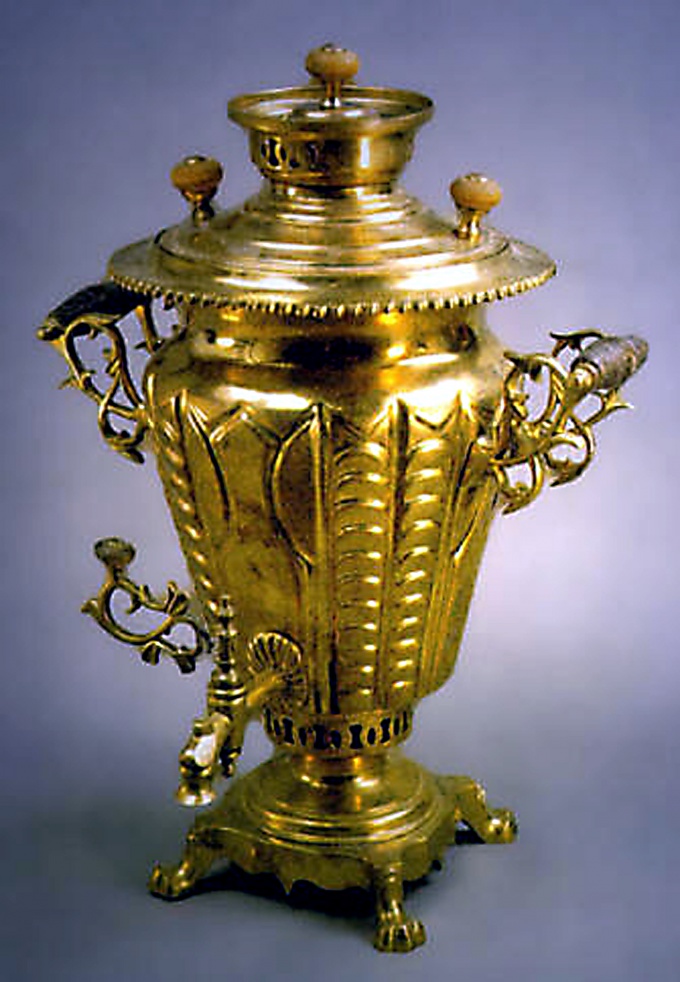You will need
- pencil;
- - a sheet of paper;
- - paints, crayons or pencils;
- a real samovar;
- the picture of the samovar.
Instruction
1
Life drawing can go to learn everything. Therefore, we consider a real samovar and parallel to the picture. This is necessary in order to understand what parts of the samovar and how they correlated with each other in shape, size and arrangement relative to each other. Before drawing an illustration to a fairy tale or a still life, try to draw a samovar separately.
2
Determine the location of the samovar on the sheet. If you draw it separately, the sheet should be put vertically. When drawing illustrations all depends on what group of characters you want to portray and how it will be arranged.
3
Samovar — item is symmetrical. Therefore to paint it you need to start with determining the axis of symmetry. Swipe vertical centerline. She can go through the entire list and only using the place that you defined for the samovar. Divide the centerline into 4 equal parts. Height of samovar can be divided into 3 main parts: case, stand with legs and cover. For the supply and take cover 1/4 top and bottom.
4
Determine the ratio of the height and widest part of the hull. From the point separating the lid from the main body, put the right and left segments is approximately equal to half the width of the samovar. Determine the ratio of the widest and narrowest parts of the body. Through the point that separates the body from a stand, draw a line parallel to the bottom edge of the sheet. It put in both sides segments equal to half the width of the body at its narrowest part. Connect the resulting points with the upper ends of the perpendicular straight lines.
5
If you look carefully at the samovar, you will definitely note that the top and bottom of any round object seem to be not straight, and curved. What is below the object relative to your eyes, the greater the radius of curvature of the arc have. Draw an arc on the top and bottom lines. The convex part of their "looks" down.
6
Draw the stand. A little back from the edges of the housing in the direction of the axis and draw 2 identical short straight lines. Connect them between the ends of an arc of the same curvature as the bottom line of the body. This arc back from the edges a little more and again spend 2 short parallel lines down. Their ends also connect arc..Draw down the same divergent lines. The lower ends of them should be approximately the same distance from the axis as the ends of the lower lines. Between the ends of the radiating lines, too, draw an arc.
7
Draw the cover. Parallel to the upper line of the hull draw at the top and bottom a short distance 2 are the same arc. From the ends of this line draw an arc of smaller curvature. Its convex part directed upward. In this arc from the centerline, put the left and right cut 2, approximately equal to the width of the stand. From these points upwards swipe 2 short vertical lines, and connect them to the ends of the arc. Convex part of the arc facing down. From the ends of this arc, draw up equal length diverging lines on an arbitrary, but small height. Between the ends of the lines, draw an oval.
8
Locate the details on the body of the samovar. Handles do not have to draw symmetrically. You can draw, for example, one handle, as if the second is not visible. Mentally divide the body of the samovar height into 3 parts. Draw the handle, stepping back 1/3 of height at a small distance from the edge. Draw a short vertical line from its ends, draw 2 converging lines pointing up. Between the ends of the lines should remain a short distance. From these tips guide parallel horizontal cuts equal to the width of the handle. Draw a support handle that is further away from you. Her lines will be parallel to the first support.
9
Draw a faucet. It is located about 1/3 of the height of the body, if you count from the bottom. The tap is approximately at the same distance from the sideline of the samovar, and the handle from the other side. The crane can be of different shapes. You can draw a line parallel to the bottom edge of the sheet, and in the end its a bit of flexing. At the connection of the crane with the body draw an oval, part of which is closed by the tube of the faucet.
Useful advice
The samovar can be very simple and exquisite decorations. Can part of the cover, on which is placed a kettle, to make the teeth, like crowns. On the body of the samovar is possible to draw a floral or geometric pattern. If you will draw it along the horizontal lines, make sure that the figure is also housed at the arc.
